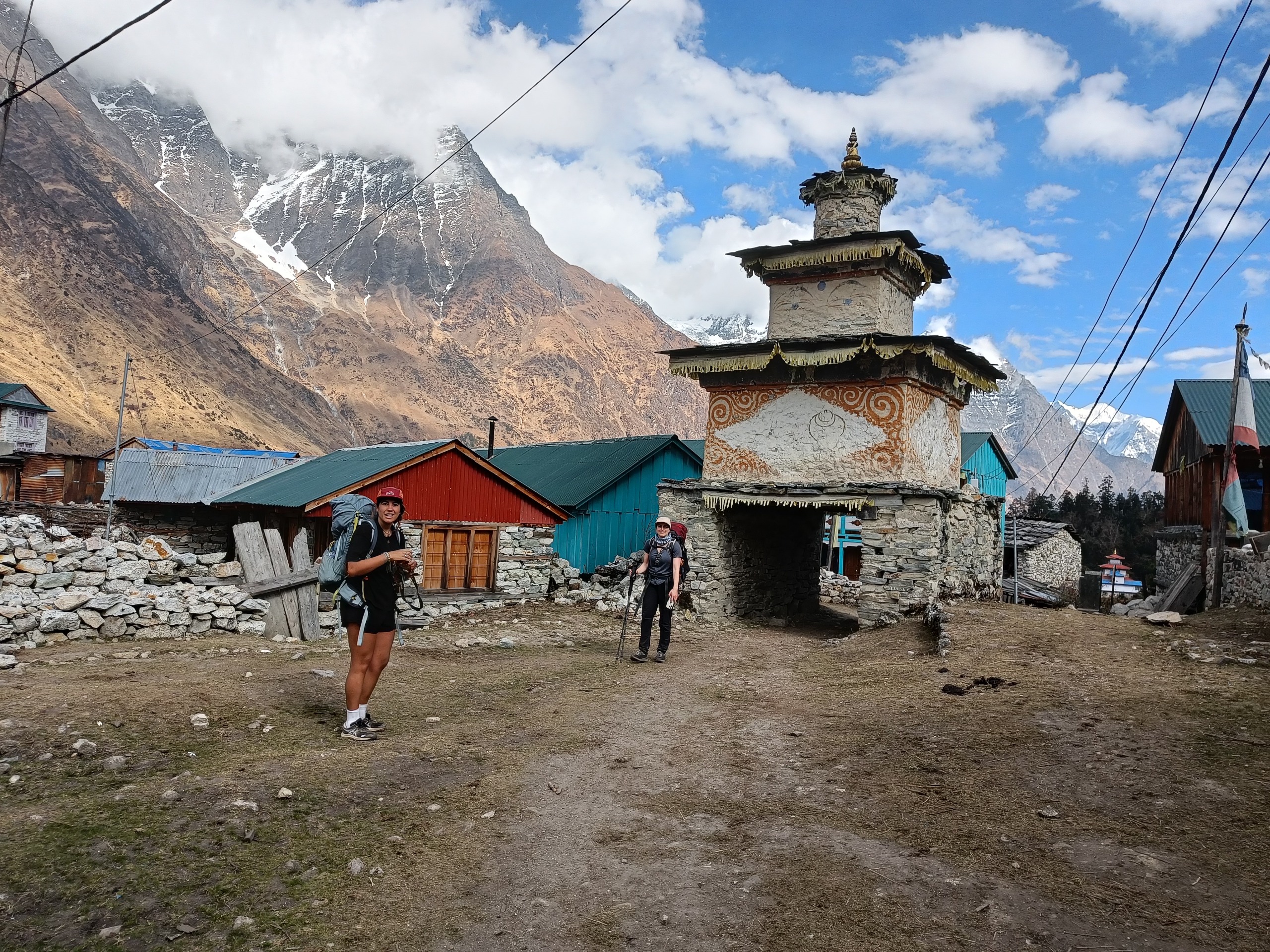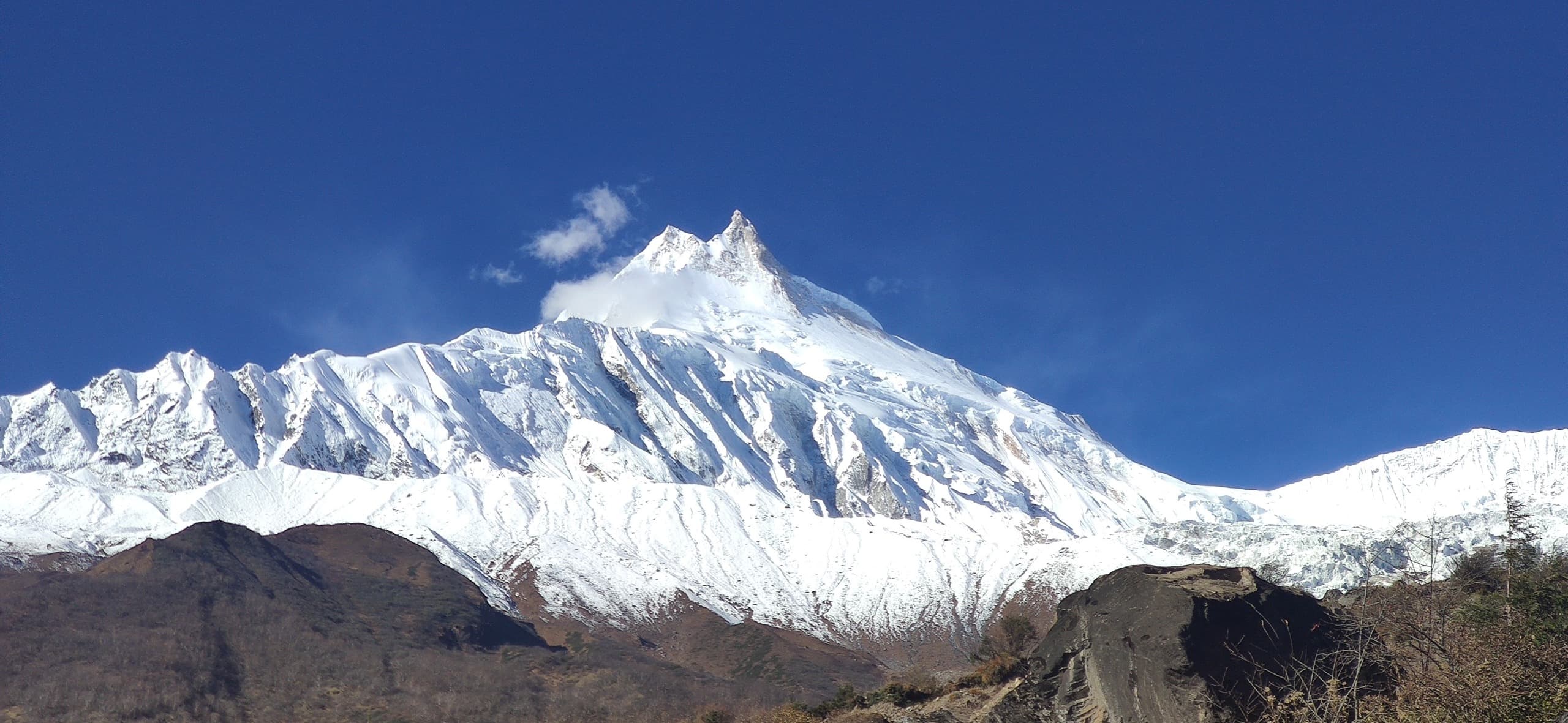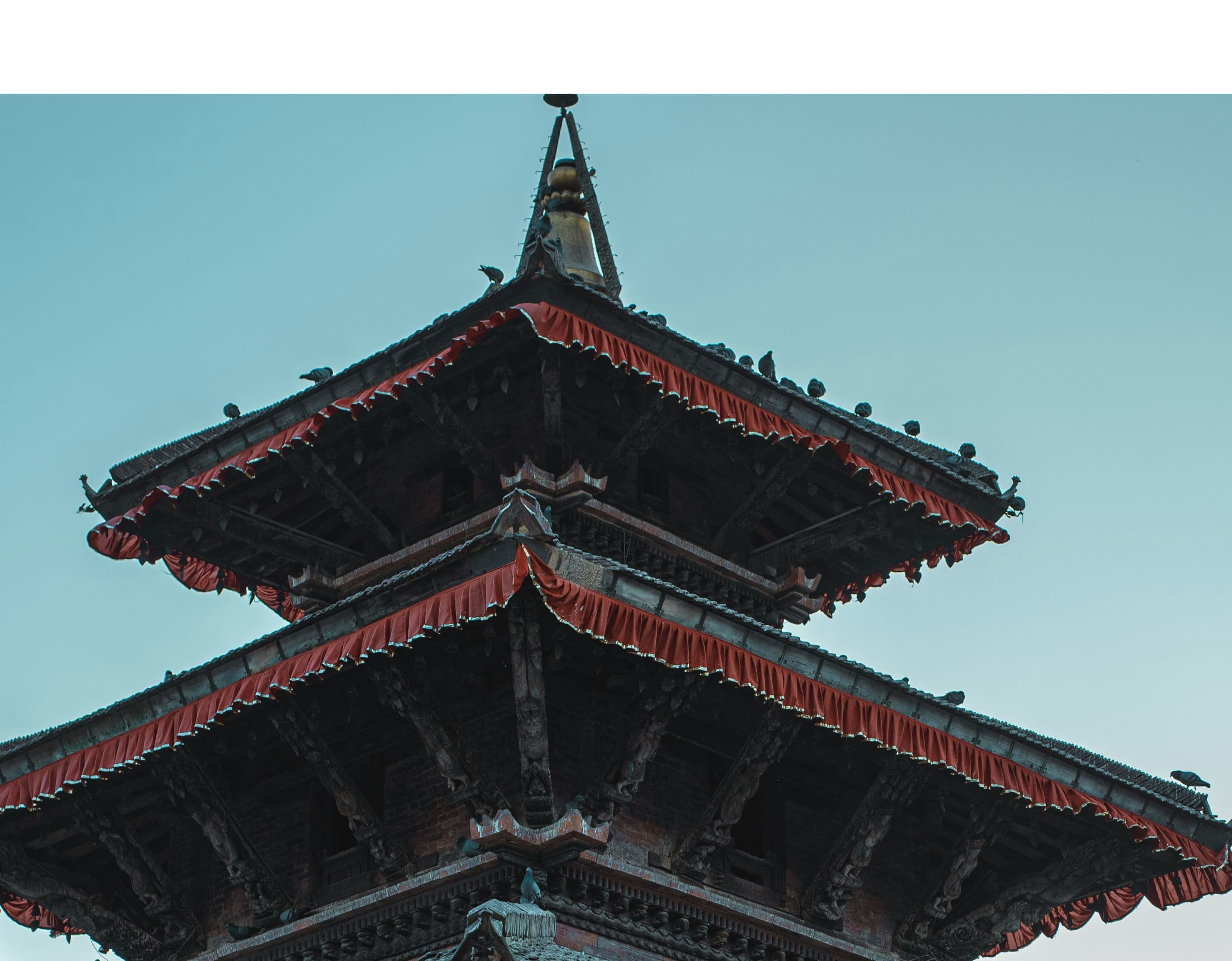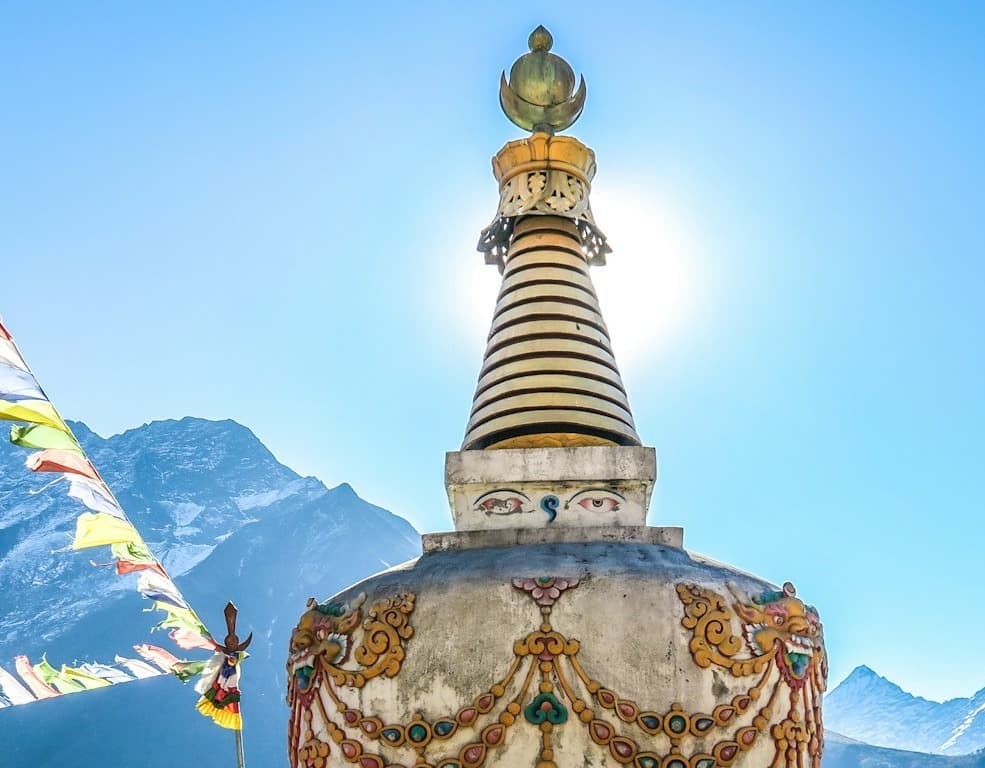- Most Tsum Valley Treks Facts
- Tsum Valley Manaslu Trek
- Tsum Valley Trek Itinerary
- Tsum Valley Trek Cost
- Tsum Valley Trek Difficulty
- Best Time for Tsum Valley Trek
- Tsum Valley Trek Map
- Tsum Valley Trek Permits
- Tsum Valley Cultural Trek
- Hidden Valley Trek Nepal
- Remote Treks in Nepal
- Tsum Valley Trek with Guide
- Manaslu Tsum Valley Circuit
- Tsum Valley Solo Trek
- Nepal Off-the-Beaten-Path Treks
- Tsum Valley Trek Reviews
- Tsum Valley Trek Altitude
- Sacred Valley Trekking Nepal
- More Information about Tsum Valley Manaslu Treks
- Tsum Valley Treks FAQs
- Overall Details of Tsum Valley Treks
The Tsum Valley Trekking Trail in Nepal is one of the most mesmerizing and culturally rich treks in the Himalayas, nestled in the northern Gorkha region near the Tibetan border. Often referred to as the “Hidden Valley of Happiness”, this off-the-beaten-path journey offers an extraordinary blend of ancient Tibetan Buddhist culture, remote Himalayan villages, and pristine alpine scenery. Opened to foreign trekkers only in 2008, the trail remains untouched and less commercialized, making it a perfect choice for trekkers seeking authentic wilderness experiences.
The trail follows the Budhi Gandaki River, gradually ascending through lush forests, cascading waterfalls, terraced fields, and traditional stone-built settlements like Chumling, Chhokang Paro, and Nile. As you venture deeper into the valley, you’ll visit sacred monasteries such as Mu Gompa and Rachen Gompa, perched on high ridges with breathtaking views of the Ganesh Himal, Himalchuli, and Sringi Himal ranges.
What sets the Tsum Valley Trek apart is its spiritual essence. The region is steeped in Tibetan Buddhist traditions, with colorful mani walls, chortens, and prayer flags adorning the trail. Trekkers often encounter local monks and nuns living in isolated retreats, preserving ancient customs unchanged for centuries.
With its moderate difficulty, elevation up to 3,700 meters, and a strong focus on culture, spirituality, and untouched nature, the Tsum Valley Trek is ideal for adventure seekers and mindful travelers looking for a soulful trekking experience in Nepal’s remote Himalayas.
Most Tsum Valley Treks Facts
The Tsum Valley Trek is one of Nepal’s most underrated yet spiritually captivating trekking routes, offering trekkers a rare glimpse into remote Himalayan culture, dramatic landscapes, and sacred Tibetan Buddhist heritage. Located in the restricted Manaslu region, the trek requires special permits and a licensed guide, making it less crowded and more exclusive.
The trek typically spans 14 to 18 days, with altitudes ranging from 700m to 3,700m at Mu Gompa, the highest settlement. Unlike popular routes like Everest or Annapurna, Tsum Valley features ancient Buddhist monasteries, mani walls, and chortens that reflect its rich spiritual significance. Villages like Chumling, Chhokang Paro, and Nile offer homestay options, allowing for deep cultural immersion.
The best seasons for Tsum Valley Trek are March to May and September to November, when the weather is clear, and the mountains—Ganesh Himal, Sringi Himal, and Baudha Himal—are in full view. Due to its moderate to challenging terrain, good physical fitness is recommended.
Trekkers are drawn to Tsum Valley for its off-the-beaten-path adventure, serene atmosphere, and the chance to witness authentic Himalayan lifestyles untouched by mass tourism. With its blend of nature, culture, and spirituality, Tsum Valley remains a hidden gem in Nepal’s trekking scene, perfect for those seeking a sacred and scenic journey in the high Himalayas.
Tsum Valley Manaslu Trek
The Tsum Valley Manaslu Trek is a powerful combination of two of Nepal’s most culturally immersive and scenically dramatic trekking regions. This extended route allows trekkers to first explore the spiritual Tsum Valley, rich in Tibetan Buddhist culture, and then continue onto the challenging Manaslu Circuit, circling the eighth-highest mountain in the world, Mt. Manaslu (8,163m). The trek features stunning high Himalayan landscapes, ancient monasteries like Mu Gompa, sacred caves, and remote ethnic villages. Because it lies in a restricted area, this trek is far less crowded than Annapurna or Everest. The Tsum Valley Manaslu Trek is ideal for experienced trekkers seeking off-the-beaten-path adventures, spiritual depth, and authentic Nepalese and Tibetan traditions in one seamless journey.
Tsum Valley Trek Itinerary
A standard Tsum Valley Trek itinerary ranges from 14 to 18 days, depending on whether you include side trips or combine it with the Manaslu Circuit. The trek begins with a scenic drive from Kathmandu to Soti Khola, followed by trekking through lush valleys and picturesque villages such as Machha Khola, Chumling, Chhokang Paro, Nile, and Mu Gompa. These culturally significant villages offer encounters with monks, nuns, and traditional Tibetan architecture. The route follows the Budhi Gandaki River, ascending steadily through forested trails, narrow gorges, and open alpine meadows. The itinerary is designed for gradual altitude gain and deep cultural interaction, often including visits to Rachen Gompa and Dephyudonma Cave, a sacred meditation site. This trek plan suits those looking for a remote, enriching, and meditative Himalayan journey.
Tsum Valley Trek Cost
The Tsum Valley Trek cost typically ranges from USD $1,200 to $1,800 per person, depending on your trek duration, group size, and level of service. The cost includes trekking permits, such as the Restricted Area Permit (RAP) and Manaslu Conservation Area Permit (MCAP). Costs also cover licensed guides, porters, accommodation in tea houses or homestays, and three meals per day. If you're hiring a private guide or trekking with a luxury group, the price may be higher. Transportation from Kathmandu to Soti Khola and back is usually included in full packages. While it’s possible to trek on a budget, the remote location and permit requirements make guided tours the most practical option. For a safe, legal, and culturally deep trekking experience, investing in a guided trek is highly recommended.
Tsum Valley Trek Difficulty
The Tsum Valley Trek difficulty is considered moderate to challenging, mainly due to its remote nature and gradual altitude gain. The trail begins at around 700m and reaches up to 3,700m at Mu Gompa, the highest point. Daily trekking ranges from 5 to 7 hours, often on rocky and steep paths through river gorges and forests. There are no technical climbing sections, but physical fitness and stamina are essential due to the remoteness and lack of infrastructure. Altitude sickness risk is lower than in Everest or Annapurna, but proper acclimatization is still necessary. The trail’s isolation and lack of emergency facilities require mental resilience and preparation, especially during colder seasons. It’s ideal for trekkers with some prior experience in Nepal’s mid- to high-altitude routes.
Best Time for Tsum Valley Trek
The best time for Tsum Valley Trek is during spring (March to May) and autumn (September to November). These months offer clear skies, moderate temperatures, and vibrant natural landscapes, making trekking conditions ideal. Spring brings blooming rhododendron forests, green pastures, and warmer weather—perfect for photography and nature enthusiasts. Autumn is favored for its dry, stable climate and crystal-clear views of the Ganesh Himal, Sringi Himal, and Himalchuli ranges. Monsoon season (June to August) makes trails slippery and landslide-prone, while winter (December to February) brings cold temperatures and occasional snow at higher altitudes. For the best mix of cultural festivals, weather comfort, and trail safety, plan your Tsum Valley journey in the spring or fall trekking seasons.
Tsum Valley Trek Map
A Tsum Valley Trek map is essential for visualizing this remote Himalayan trail. The route begins at Soti Khola and follows the Budhi Gandaki River, passing through villages like Jagat, Chumling, Chhokang Paro, Nile, and ending near Mu Gompa (3,700m). A detailed trekking map highlights key altitude points, monasteries, and cultural landmarks like Rachen Gompa, Dephyudonma Cave, and the Milarepa Piren Phu cave. Most maps also indicate how the Tsum Valley Trail connects with the Manaslu Circuit, offering trekkers the flexibility to extend their route. High-resolution, topographic maps help with route planning, acclimatization tracking, and understanding the cultural depth and elevation gains of the trail. Ideal for trekkers, guides, and researchers seeking clarity and navigation in this restricted and geographically diverse region.
Tsum Valley Trek Permits
Obtaining the correct Tsum Valley Trek permits is mandatory as it lies in a restricted area of Nepal. Trekkers need the Restricted Area Permit (RAP) for Tsum Valley and the Manaslu Conservation Area Permit (MCAP). The RAP costs approximately USD $40 to $70 per week, depending on the season. These permits must be arranged through a licensed trekking agency, and solo trekking is strictly prohibited. Additionally, a registered guide is required by law. Carrying the correct permits ensures legal entry, safe passage through police checkpoints, and helps fund conservation and infrastructure in the region. The permit process reinforces the high-value, low-impact tourism model, making trekking in Tsum both responsible and secure.
Tsum Valley Cultural Trek
The Tsum Valley cultural trek is an extraordinary journey through ancient Tibetan Buddhist communities that have remained unchanged for centuries. This trail passes through remote villages like Chhokang Paro, Nile, and Lamagaun, home to the Tsumba people, a unique ethnic group with strong Tibetan roots. The trek showcases monasteries like Mu Gompa and Rachen Gompa, where you can witness monks in meditation, prayer rituals, and traditional ceremonies. The path is adorned with mani walls, chortens, and prayer flags, highlighting the valley’s spiritual richness. Homestays offer opportunities for authentic cultural interaction, including local meals, stories, and traditional attire. Perfect for travelers seeking deep immersion, heritage experiences, and slow, mindful travel in the Himalayas.
Hidden Valley Trek Nepal
The Hidden Valley Trek in Nepal refers to the mystical Tsum Valley, a sacred and secluded region previously closed to foreign visitors until 2008. It is often dubbed a “hidden gem of the Himalayas” due to its isolation, cultural purity, and untouched landscapes. This secret trekking route reveals snow-capped mountains, Buddhist sanctuaries, and deep spiritual energy found nowhere else in Nepal. Unlike commercial trails, this hidden valley retains its authentic Tibetan lifestyle, ancient monasteries, and tranquil atmosphere. The journey is transformative, attracting trekkers in search of peace, reflection, and meaningful encounters. The Hidden Valley Trek Nepal is ideal for experienced trekkers who wish to explore a spiritually significant and naturally pristine destination far from the modern world.
Remote Treks in Nepal
Among all remote treks in Nepal, the Tsum Valley Trek stands out for its blend of raw wilderness and cultural depth. Located in the restricted northern Manaslu region, this trail offers limited facilities, few trekkers, and incredible untouched beauty. Trekkers pass through ancient forests, glacial rivers, and villages with no road access, where electricity and Wi-Fi are limited. This isolation enhances the sense of peace, authenticity, and solitude. Other remote treks like Upper Dolpo, Kanchenjunga, or Makalu Base Camp are equally stunning, but Tsum Valley uniquely offers spiritual richness and Tibetan Buddhist culture. For serious adventurers seeking non-touristy trails and cultural discovery, Tsum is one of the top remote trekking routes in Nepal.
Tsum Valley Buddhism
Tsum Valley Buddhism is at the heart of what makes this region so spiritually powerful. Deeply influenced by Tibetan Buddhism, the valley is home to sacred sites such as Mu Gompa, Rachen Nunnery, and Dephyudonma Cave, believed to be blessed by the Buddhist saint Milarepa. You’ll encounter red-robed monks, ancient mani stones, and prayer wheels that define the valley’s identity. Local villagers observe centuries-old rituals, seasonal pujas (ceremonies), and monastic traditions that travelers can respectfully witness. Unlike other treks focused purely on scenery, the Tsum Valley is a living pilgrimage site, ideal for those seeking spiritual growth, cultural enlightenment, and meditative trekking experiences. This is one of Nepal’s most profoundly sacred Buddhist regions.
Tsum Valley Homestay Trek
The Tsum Valley Homestay Trek offers a deeply immersive cultural experience in the heart of Nepal’s remote Himalayas. Rather than staying in standard teahouses, trekkers are welcomed into local homes in villages like Chumling, Chhokang Paro, and Nile, where the Tsumba people share traditional meals, stories, and customs. This community-based trek is ideal for travelers who value authentic human connection alongside dramatic scenery. You’ll experience life as locals do—sleeping in simple rooms, eating home-cooked Tibetan-style meals, and learning about centuries-old Buddhist practices. Homestays also promote sustainable tourism, ensuring your visit directly supports local livelihoods. Perfect for those seeking slow travel, spiritual exploration, and meaningful off-grid adventures in the Himalayas.
Tsum Valley Trek with Guide
A Tsum Valley Trek with a guide is not only legally required but also enhances your entire trekking experience. As the region falls under a restricted zone, a licensed guide is mandatory for permit approval. Beyond logistics, your guide will offer insightful cultural interpretation, assist with navigation, and help bridge language barriers with locals. Guides are invaluable when exploring sacred sites like Mu Gompa, Rachen Nunnery, or Milarepa’s cave, where storytelling and Buddhist teachings add deep meaning. In case of emergencies or altitude issues, your guide ensures safety and coordination. Choosing to trek with a professional guide transforms your journey into a safe, educational, and spiritually rewarding experience in one of Nepal’s most culturally profound trekking regions.
Manaslu Tsum Valley Circuit
The Manaslu Tsum Valley Circuit is a premium trekking route that merges the cultural depth of Tsum Valley with the dramatic alpine challenge of the Manaslu Circuit Trek. This extended trail takes trekkers through spiritual Tibetan villages, remote gompas, and deep valleys before ascending to the Larkya La Pass (5,160m)—one of Nepal’s most iconic high passes. This combined trek typically lasts 21 to 24 days, offering a rich mix of spirituality, adventure, and geographic diversity. You’ll explore Buddhist sacred sites, witness panoramic views of Mt. Manaslu, Himalchuli, and Ganesh Himal, and cross multiple climate zones. The Manaslu Tsum Valley circuit is perfect for trekkers seeking a holistic Himalayan experience filled with culture, challenge, and solitude.
Tsum Valley Solo Trek
Although the Tsum Valley solo trek is technically not permitted without a guide, it remains a popular query among solo adventurers seeking solitude and personal spiritual journeys in the Himalayas. Nepal’s restricted area regulations require solo trekkers to hire a licensed guide and obtain special permits through a registered agency. Solo travelers can still enjoy private guided experiences, customizing their itinerary while maintaining safety. Female solo trekkers, especially, find Tsum Valley to be respectful, peaceful, and welcoming. With the support of a guide, solo trekking in Tsum becomes an empowering experience—rich in introspection, quiet landscapes, and one-on-one cultural interactions with locals in hidden mountain villages.
Nepal Off-the-Beaten-Path Treks
Tsum Valley is one of the most sought-after Nepal off-the-beaten-path treks, ideal for trekkers avoiding the crowded Everest or Annapurna routes. Known for its isolation, raw Himalayan beauty, and deep-rooted spiritual traditions, this trail offers a rare chance to explore unspoiled Nepal. Other similar treks include Upper Dolpo, Kanchenjunga, and Makalu Base Camp, but Tsum Valley remains unique due to its sacred Buddhist culture and hidden valley status. Far from roads, the region features ancient monasteries, ethnic Tibetan villages, and scenic trails untouched by commercialization. Perfect for experienced trekkers and seekers of solitude, spirituality, and wild mountain landscapes, Tsum Valley exemplifies Nepal’s true off-grid trekking experience.
Tsum Valley Trek Reviews
Tsum Valley trek reviews consistently praise this route for its spiritual atmosphere, unspoiled nature, and warm hospitality from the Tsumba people. Trekkers often describe it as a life-changing cultural trek, emphasizing the serenity of Mu Gompa, the charm of local homestays, and the rich presence of Tibetan Buddhism along the trail. Compared to mainstream routes, Tsum Valley is seen as more peaceful, authentic, and emotionally fulfilling. Many reviewers note the stunning Himalayan backdrops, untouched forests, and deeply personal spiritual moments they experienced on the journey. High ratings are often given for guide support, local food, and cultural insights, making this trek a top pick for adventurous and mindful travelers.
Tsum Valley Trek Altitude
The Tsum Valley trek altitude ranges from around 700 meters at the starting point in Soti Khola to a maximum of 3,700 meters at Mu Gompa, the final sacred destination. The trek offers a gradual ascent, making it safer for acclimatization compared to other high-altitude treks in Nepal. While the risk of altitude sickness is lower, it's still important to ascend slowly, stay hydrated, and take acclimatization days if necessary. Due to the high elevation, especially in the upper valley beyond Chhokang Paro, temperatures drop and oxygen levels thin, so proper preparation is essential. This moderate-altitude trek is suitable for most fit trekkers and offers spectacular mountain views without extreme elevation challenges.
Sacred Valley Trekking Nepal
Tsum Valley is a leading example of sacred valley trekking in Nepal, attracting pilgrims, spiritual seekers, and cultural trekkers alike. The trail passes through a network of ancient Buddhist monasteries, meditation caves, and pilgrimage routes linked to revered saints like Milarepa and Padmasambhava. Spiritual highlights include Mu Gompa, Rachen Nunnery, and Dephyudonma Cave, all steeped in mystical lore. Trekkers are often moved by the tranquil silence, chanting monks, and the profound symbolism in mani walls and prayer flags scattered across the valley. For those looking to combine trekking with spiritual awakening, sacred valley trekking in Nepal’s Tsum region offers an unparalleled journey of inner and outer exploration.
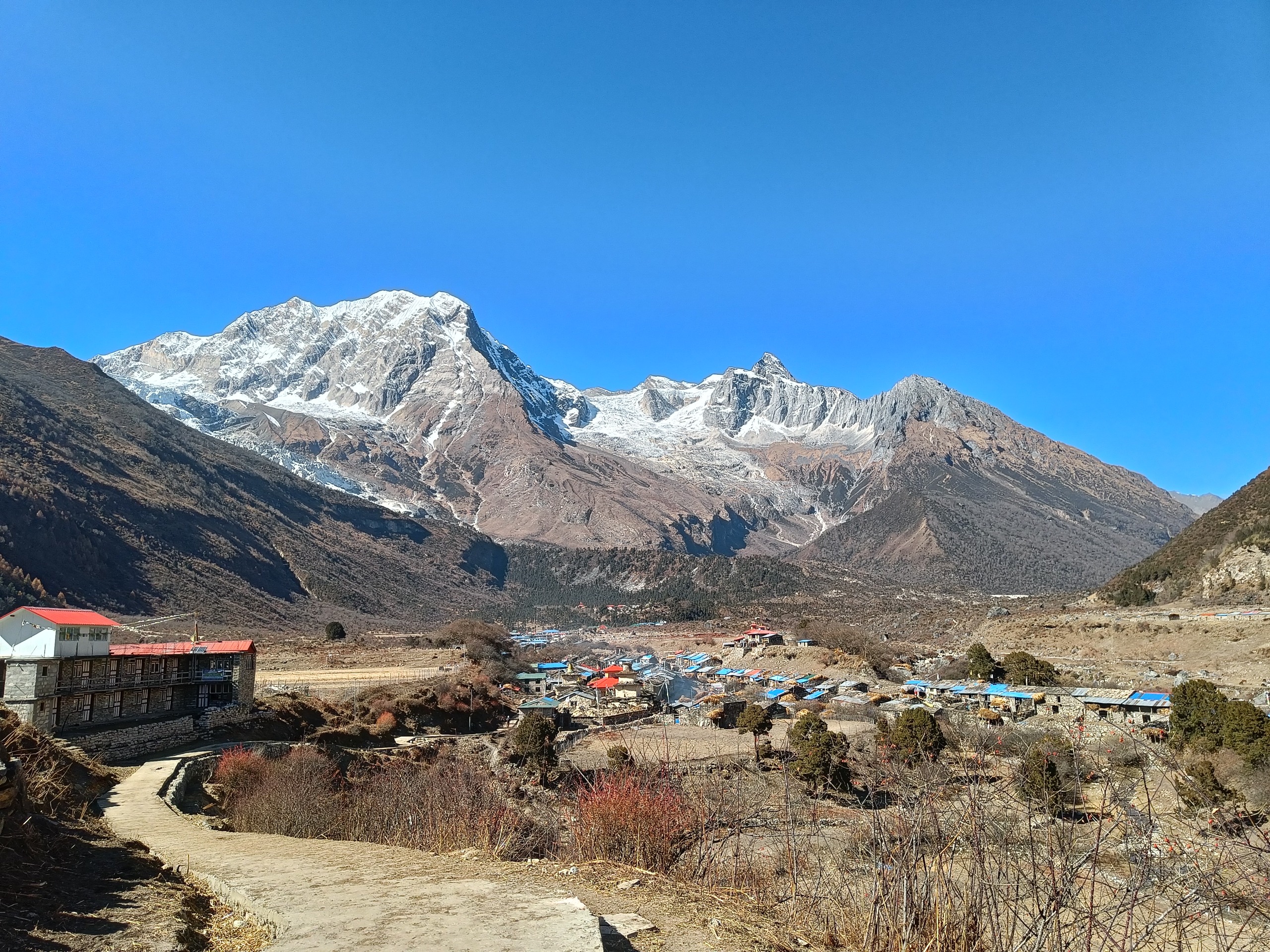
More Information about Tsum Valley Manaslu Treks
The Tsum Valley Manaslu Treks offer a unique blend of remote Himalayan adventure, Buddhist spirituality, and rich Tibetan culture. Located in the Gorkha district of Nepal, this combined trek takes you through the sacred Tsum Valley—home to ancient monasteries like Mu Gompa and Rachen Nunnery—before joining the Manaslu Circuit to cross the high-altitude Larkya La Pass (5,160m). The route passes through isolated villages, stunning mountain vistas, and culturally preserved landscapes. Due to its restricted area status, permits and a licensed guide are mandatory. It's perfect for experienced trekkers seeking a spiritually rich and less crowded Himalayan experience.
Located in Gorkha District
The Tsum Valley Trek is located in the northern Gorkha district of Nepal, within the sacred bounds of the Manaslu Conservation Area. Nestled close to the Tibetan border, this region is geographically isolated, making it one of the most authentic Himalayan trekking destinations. The district is also home to the famous Manaslu Circuit, and Tsum Valley branches off as a culturally rich detour. As part of the Gandaki Province, Gorkha’s mountainous terrain, deep gorges, and ancient Tibetan influence define the valley’s mystical charm. This strategic location has allowed Tsum Valley to preserve its spiritual identity, unspoiled nature, and ancestral traditions, away from the effects of mainstream tourism.
Previously Restricted Area
Until 2008, the Tsum Valley remained a restricted area, closed to foreign trekkers by the Nepalese government. This restriction was implemented to protect the valley’s indigenous culture, religious heritage, and fragile mountain ecosystem. As a result, Tsum has been spared the commercialization seen in other trekking regions like Everest or Annapurna. When it was finally opened, the requirement of special permits and guides ensured that visitors would travel responsibly. This period of isolation preserved centuries-old monasteries, polyandrous social structures, and Buddhist teachings in their original form. Today, trekking in Tsum still feels like stepping back in time to a spiritually untouched Himalayan sanctuary.
Gradual Altitude Gain
The Tsum Valley Trek is ideal for trekkers seeking high Himalayan experiences without the extremes of altitude. The trail begins at around 700 meters and ascends gradually to Mu Gompa at 3,700 meters, the highest point of the trek. This moderate elevation profile minimizes the risk of altitude sickness and allows for comfortable acclimatization. Unlike more strenuous treks like Everest Base Camp or Annapurna Circuit, Tsum’s gradual gain in elevation makes it more suitable for first-time high-altitude trekkers and photographers who want to enjoy the views without strain. The trail passes through varying climatic zones, offering a rich variety of flora, fauna, and landscapes.
Milarepa Cave and Sacred Sites
One of the spiritual highlights of the Tsum Valley Trek is a visit to Milarepa’s Cave, also known locally as Piren Phu. This sacred cave is believed to be where the Tibetan saint Milarepa meditated during his journey to spread Buddhism in the Himalayas. It is a revered pilgrimage site, attracting monks, nuns, and spiritual trekkers from around the world. The trail is also lined with mani walls, chortens, and prayer flags, testifying to the deep-rooted Tibetan Buddhist traditions of the valley. These sacred landmarks are not just beautiful—they serve as powerful reminders of the region’s spiritual significance and cultural purity.
Home to Rachen Nunnery
Rachen Nunnery, located near the village of Nile, is one of Nepal’s largest and most spiritually active Buddhist nunneries. Established in the early 1900s, it is home to over 100 nuns who follow strict monastic practices, including prayer rituals, Buddhist teachings, and meditation. The nunnery is a spiritual refuge for women in the Himalayas and reflects the equality in religious life that Tibetan Buddhism promotes. Its architecture—brightly painted walls, prayer halls, and spinning wheels—enhances the beauty of the Tsum trail. Trekkers who visit Rachen Nunnery gain a rare opportunity to witness daily monastic life, chanting ceremonies, and the preservation of ancient wisdom.
Cultural Uniqueness of Tsumba People
The Tsumba people, native to the valley, have a distinctive ethnic identity and cultural lifestyle influenced by Tibetan ancestry. Their language, clothing, and ritual practices remain remarkably well preserved. In some villages, polyandry—a system where one woman marries multiple brothers—is still practiced, a rare tradition even within the Himalayas. The Tsumba also celebrate unique Buddhist festivals, such as Dhachyang, where community prayers and archery rituals take place. Villagers follow spiritual codes, with many families dedicating members to monastic life. Trekking through Tsum Valley offers a window into a living museum of Himalayan culture, where the past is honored and still practiced in daily life.
No Road Access Beyond Trailhead
The Tsum Valley trail is completely roadless beyond Soti Khola, which helps preserve its natural beauty and remote atmosphere. Unlike regions like Annapurna where roads have reached deep into the mountains, Tsum remains untouched by modern infrastructure. Supplies are carried by porters, mules, or yaks, and communication remains limited, offering an off-the-grid experience. This means trekkers can enjoy the raw wilderness, undisturbed mountain views, and authentic village life. It also makes logistical planning essential, as everything—food, fuel, and gear—must be transported manually. This absence of roads adds to the trek’s allure for those seeking true Himalayan isolation and eco-conscious adventure.
Eco-Tourism and Sustainability
The Tsum Valley Trek is a model for sustainable and eco-tourism in Nepal. With limited commercial development, the local communities actively promote low-impact trekking practices. Homestays offer cultural exchange and direct income to locals, reducing the need for large-scale infrastructure. Most food served is organic and locally sourced, minimizing transportation emissions. Waste management is a community concern, and plastic use is discouraged. Trekkers are encouraged to respect local customs, carry reusable bottles, and follow Leave No Trace principles. This sustainability-first approach ensures the valley remains pristine and culturally intact for future generations, attracting travelers who value ethical adventure and eco-responsible travel.
Spiritual and Festival Trekking
Tsum Valley is a sacred space ideal for spiritual and festival trekking. The region celebrates several Buddhist festivals, including Losar (Tibetan New Year), where monasteries light butter lamps, perform mask dances, and chant sacred mantras. During these festivals, villagers wear traditional attire, and the air is filled with spiritual energy and cultural expression. Trekkers can time their visits to witness these sacred events, offering a deeper connection to Himalayan spirituality. Sites like Mu Gompa and Rachen Nunnery become hubs of activity during these times. This spiritual atmosphere, combined with natural beauty and cultural authenticity, makes Tsum a favorite among those seeking meaningful mountain pilgrimages.
Ideal for Cultural and Photographic Treks
With its rich ethnographic heritage, dramatic mountain backdrops, and ancient architecture, the Tsum Valley Trek is a haven for photographers and cultural explorers. The trek offers stunning subjects—snow-capped peaks, monastic rituals, Tibetan-style houses, and colorful prayer flags fluttering in the Himalayan wind. Every village offers a story, every stupa a history, and every face a portrait. The natural lighting at dawn and dusk adds mood and emotion to photographs. For cultural trekkers, the chance to walk through centuries-old traditions, interact with monks and villagers, and observe daily life makes Tsum one of the most visually and spiritually rewarding destinations in Nepal.
